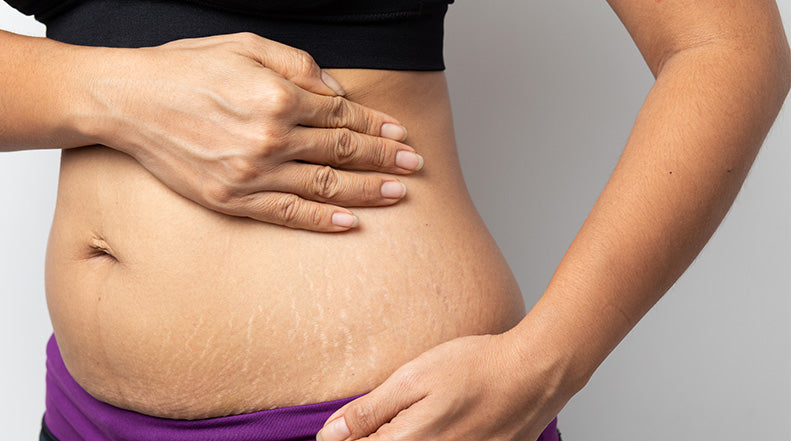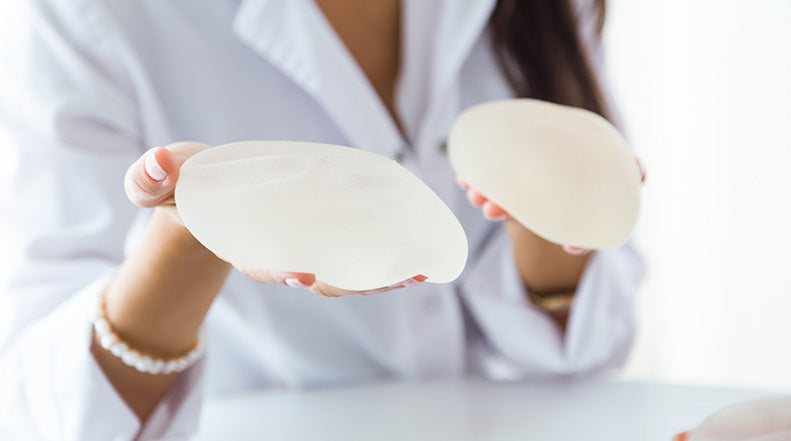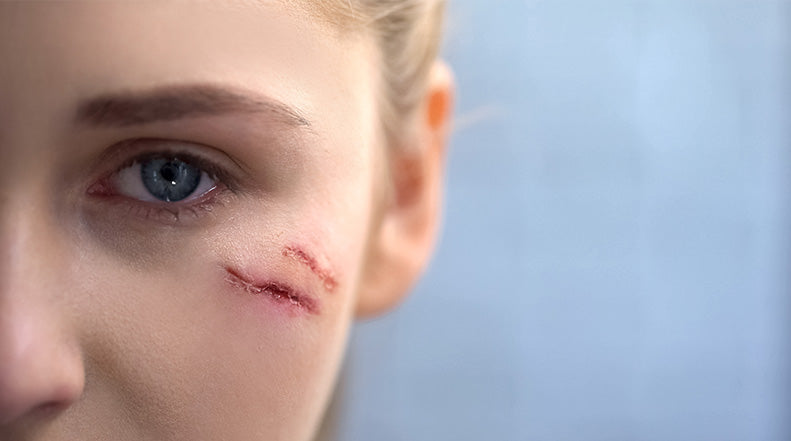How to Treat Stretch Marks

Whether it’s losing those extra holiday pounds, having that beautiful baby, fluctuating muscle tone, puberty or hormonal changes, stretch marks are an inevitable part of life. You’d be hard pressed to find anyone that welcomed the arrival of stretch marks, no matter the reason. For example, though babies are considered to be worth the pain and sleepless nights, many new mothers feel embarrassed about their stretch marks. The bad news is that pregnancy makes women’s bodies more vulnerable to stretch marks. The good news is that stretch marks can be treated. In this article, we’ll address what stretch marks are, what causes them, whether they can be prevented, and what kinds of treatment options are available once they do appear.
WHAT ARE STRETCH MARKS?
Stretch marks are long, narrow lines that develop on the skin. They often are a different hue than the surrounding skin. Anyone is susceptible to stretch marks. Stretch marks can appear on the stomach, thighs, hips, breasts, arms and back. Stretch marks usually start out purple or red, and eventually fade to white lines that may or may not disappear on their own.
SOME FAST FACTS ABOUT STRETCH MARKS
-The statistics of stretch marks occurring range from 40-90%, depending on race, age and sex.
-Both sexes can be affected by stretch marks, but women tend to get them more often.
-70% of girls develop stretch marks during puberty, whereas only 40% of boys do.
-Stretch marks most often appear after the 25th week of pregnancy.
-Stretch marks are a common side effect of pregnancy.
-Although some women swear by cocoa butter to prevent stretch marks, the efficacy of cocoa butter in stretch mark removal has never been proven.
-Laser therapy, however, has been proven to reduce the appearance of stretch marks.
Laser therapy can’t completely remove stretch marks, but it may help to make them less noticeable. Pulsed dye laser treatment is one type of laser treatment often used on stretch marks. It is a painless procedure, and can be used in the early stage of stretch mark development (while the stretch marks are still red or purple). The energy from the laser is absorbed by the blood vessels underneath the stretch marks. The blood vessels then collapse and the red or purple color either disappears or whitens. Laser therapy is usually expensive and it takes multiple treatments to obtain the desired result.
WHAT CAUSES STRETCH MARKS?
The skin consists of three key layers: the epidermis (the outermost layer), the dermis (the middle layer), and the hypodermis (the deepest layer). Stretch marks form in the dermis when the connective tissue is “stretched” beyond the power of its elasticity. When this happens, the connective tissue tears, causing a stretch mark. Stretch mark scarring occurs when the skin cannot bounce back after a period of major growth, which is why pregnant women and growing teenagers are most likely to get stretch marks.
CAN STRETCH MARKS BE STOPPED BEFORE THEY START?
The only thing that may help to prevent stretch marks is keeping the skin very well hydrated while going through physical changes. Drinking lots of water and applying emollient moisturizers may improve elasticity and prevent the dermis from ripping and causing the stretch mark.
CAN STRETCH MARKS BE CORRECTED ONCE THEY APPEAR?
Many of the known remedies for stretch marks are homeopathic. Some of these include:
-Castor oil: Apply a thick layer of castor oil to the affected area, wrap in plastic wrap, apply heat.
-Aloe vera: Apply to affected area, leave on for 15 minutes, then rinse with lukewarm water.
-Lemon juice: Rub fresh lemon juice onto the stretch mark(s) using a circular motion. Allow to soak in for 10 minutes, then rinse with warm water.
-Sugar: Natural white sugar is one of the best remedies for stretch marks, as it exfoliates and softens the skin. Mix 1 tablespoon of raw sugar with almond oil and a few drops of lemon juice. Mix well and apply to stretch marks.
OTHER OPTIONS
If you have tried natural methods with little to no results, you may want to try something that's been shown to improve the discoloration of stretch marks. NewGel+ offers silicone treatments recommended by scar experts. NewGel+ sheeting is made with medical-grade silicone, and comes available in strips that vary in size and shape. These silicone sheet pieces are durable, adhere firmly and are customized to fit your scar. NewGel+ also offers a silicone gel that is invisible, odorless and easy to apply for stretch marks in more visible places such as arms or thighs.
OTHER TREATMENTS FOR STRETCH MARKS
-Tretinoin creams (used to treat fine lines, wrinkles, dark or rough spots)
-Pulsed dye laser therapy
-Microdermabrasion (a cosmetic treatment in which the face is massaged with exfoliant crystals to remove dead epidermal cells)
Unfortunately, none of the treatments above have been proven to make stretch marks completely disappear.
Stretch marks are not medically dangerous, but can cause severe aesthetic concerns and anxiety. Although the cause of the marks might be unavoidable (your body physically growing and thereby stretching the skin), there is no reason to struggle with feelings of embarrassment or shame due to your appearance.




Comments